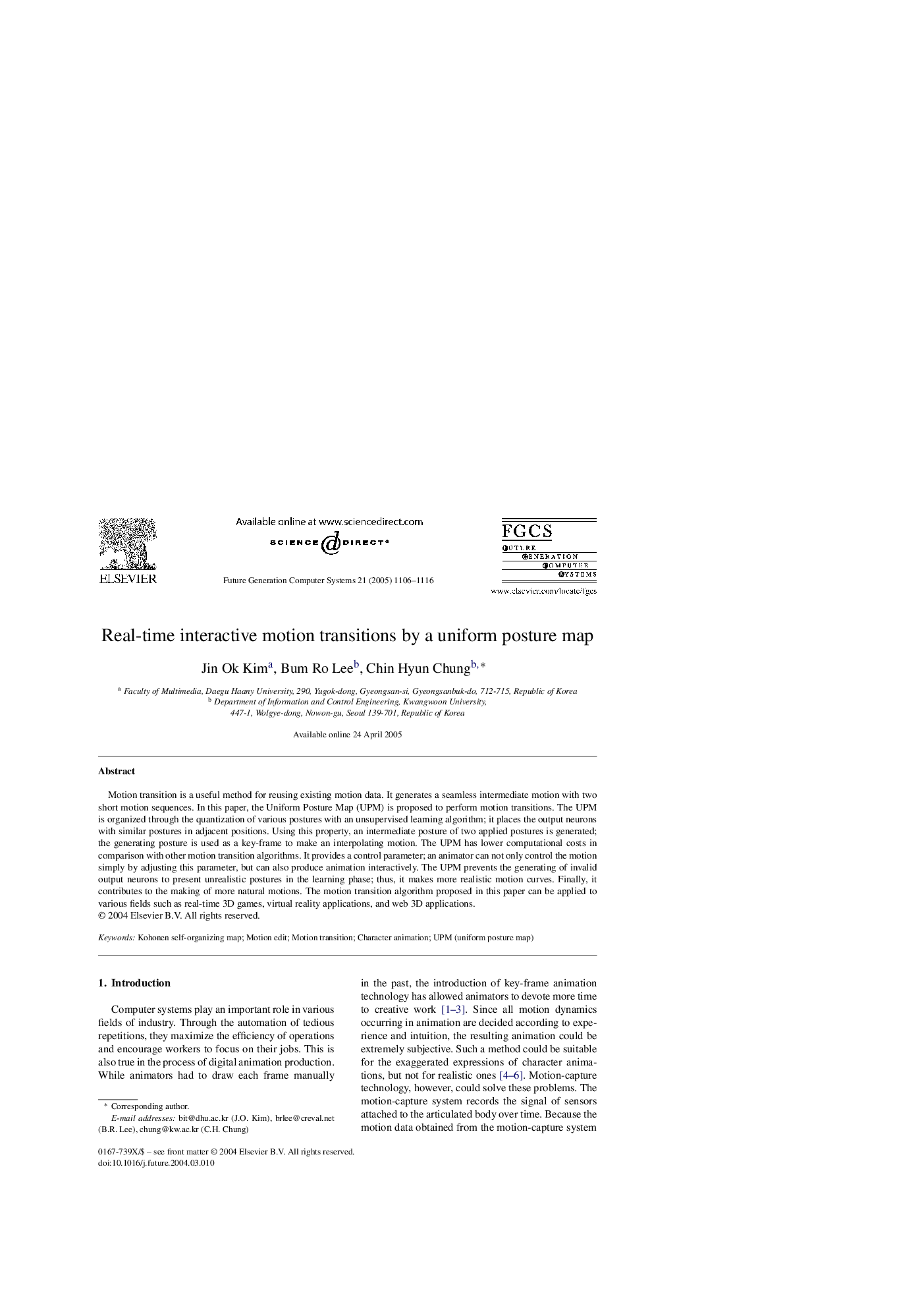| Article ID | Journal | Published Year | Pages | File Type |
|---|---|---|---|---|
| 10330417 | Future Generation Computer Systems | 2005 | 11 Pages |
Abstract
Motion transition is a useful method for reusing existing motion data. It generates a seamless intermediate motion with two short motion sequences. In this paper, the Uniform Posture Map (UPM) is proposed to perform motion transitions. The UPM is organized through the quantization of various postures with an unsupervised learning algorithm; it places the output neurons with similar postures in adjacent positions. Using this property, an intermediate posture of two applied postures is generated; the generating posture is used as a key-frame to make an interpolating motion. The UPM has lower computational costs in comparison with other motion transition algorithms. It provides a control parameter; an animator can not only control the motion simply by adjusting this parameter, but can also produce animation interactively. The UPM prevents the generating of invalid output neurons to present unrealistic postures in the learning phase; thus, it makes more realistic motion curves. Finally, it contributes to the making of more natural motions. The motion transition algorithm proposed in this paper can be applied to various fields such as real-time 3D games, virtual reality applications, and web 3D applications.
Related Topics
Physical Sciences and Engineering
Computer Science
Computational Theory and Mathematics
Authors
Jin Ok Kim, Bum Ro Lee, Chin Hyun Chung,
